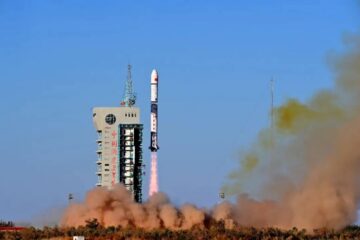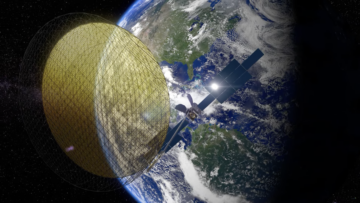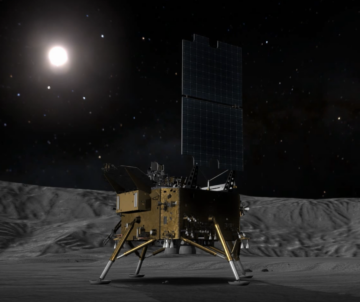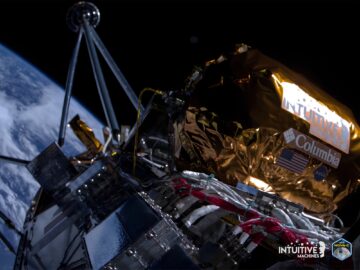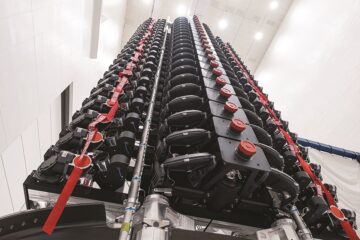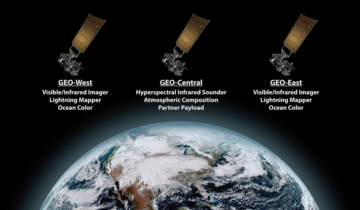
WASHINGTON — The National Geospatial-Intelligence Agency is supercharging its use of commercial satellite imagery and analytics with a new procurement program dubbed “Luno.”
“We’re trying to drive that market signal,” Devin Brande, director of the NGA commercial operations group, said Feb. 22.
The Luno program seeks to leverage commercial satellite imagery and data analytics to enhance NGA’s global monitoring capabilities. The agency in January issued a solicitation for Luno “Part A” bids, and proposals are due in late March.
Contract awards are expected sometime this year, Brande said at the Commercial Space Transportation Conference hosted by the Federal Aviation Administration and the Commercial Spaceflight Federation.
Brande and other government officials at the conference discussed the perceived disconnect between the government’s professed long-term demand for certain technologies and the actual investments made. NGA aims to put its money where its mouth is when it comes to leveraging commercial space capabilities and services, he said.
Expansion of earlier program
Luno is expanding an earlier program called Economic Indicator Monitoring (EIM) that NGA launched in 2021 with a $29 million budget over five years. “We’ve gone up 10x in the ceiling because of the success that we’ve enjoyed with our industry partners,” said Brande.
The Luno program intends to demonstrate a tangible commitment to commercial Earth observation services, he added.
With an estimated $290 million ceiling, Luno will seek commercial monitoring services to track economic activity globally through observation of factors like shipping, construction, energy infrastructure, and agricultural production; environmental monitoring of things like natural disasters, climate patterns and resource extraction; and watching military capabilities of foreign nations by detecting equipment, troop movements, base construction, and other national security indicators.
According to industry sources, Luno is drawing widespread attention in the geospatial intelligence sector and a large number of bids because of its projected size.
NGA has told vendors, these sources said, that the agency envisions using the Luno program to augment or to support intelligence priorities using a different business model. Rather than hire contractors to analyze classified data in top-secret facilities, NGA would buy analysis as a service — an approach many in the industry argue is more efficient.
- SEO Powered Content & PR Distribution. Get Amplified Today.
- PlatoData.Network Vertical Generative Ai. Empower Yourself. Access Here.
- PlatoAiStream. Web3 Intelligence. Knowledge Amplified. Access Here.
- PlatoESG. Carbon, CleanTech, Energy, Environment, Solar, Waste Management. Access Here.
- PlatoHealth. Biotech and Clinical Trials Intelligence. Access Here.
- Source: https://spacenews.com/nga-goes-big-on-commercial-satellite-data-with-290-million-luno-program/
- :has
- :is
- :where
- $UP
- 2021
- 22
- a
- activity
- actual
- added
- administration
- agency
- Agricultural
- aims
- an
- analysis
- analytics
- analyze
- and
- approach
- ARE
- argue
- AS
- At
- attention
- augment
- aviation
- awards
- base
- because
- between
- Big
- budget
- business
- business model
- buy
- by
- called
- capabilities
- ceiling
- certain
- classified
- Climate
- comes
- commercial
- commitment
- Conference
- construction
- contractors
- data
- Data Analytics
- Demand
- demonstrate
- detecting
- Devin
- different
- Director
- disasters
- discussed
- drawing
- drive
- dubbed
- due
- Earlier
- earth
- Economic
- efficient
- energy
- enhance
- enjoyed
- environmental
- envisions
- equipment
- estimated
- expanding
- expected
- extraction
- facilities
- factors
- Feb
- Federal
- Federal Aviation Administration
- Federation
- five
- For
- foreign
- Global
- Globally
- Goes
- gone
- Government
- Government Officials
- Group
- he
- hire
- hosted
- HTTPS
- in
- Indicator
- Indicators
- industry
- industry partners
- Infrastructure
- Intelligence
- intends
- Investments
- Issued
- IT
- ITS
- January
- large
- Late
- launched
- Leverage
- leveraging
- like
- long-term
- Luno
- made
- many
- March
- Market
- Military
- million
- model
- money
- monitoring
- more
- more efficient
- mouth
- movements
- National
- national security
- Nations
- Natural
- New
- number
- observation
- of
- officials
- on
- Operations
- or
- Other
- our
- over
- partners
- patterns
- perceived
- plato
- Plato Data Intelligence
- PlatoData
- procurement
- Production
- Program
- projected
- Proposals
- put
- rather
- resource
- Said
- satellite
- satellite imagery
- sector
- security
- Seek
- Seeks
- service
- Services
- Shipping
- Signal
- Size
- solicitation
- Sources
- Space
- spaceflight
- success
- supercharging
- support
- tangible
- Technologies
- than
- that
- The
- These
- things
- this
- this year
- Through
- to
- told
- track
- transportation
- trying
- use
- using
- vendors
- watching
- when
- widespread
- will
- with
- would
- year
- years
- zephyrnet

